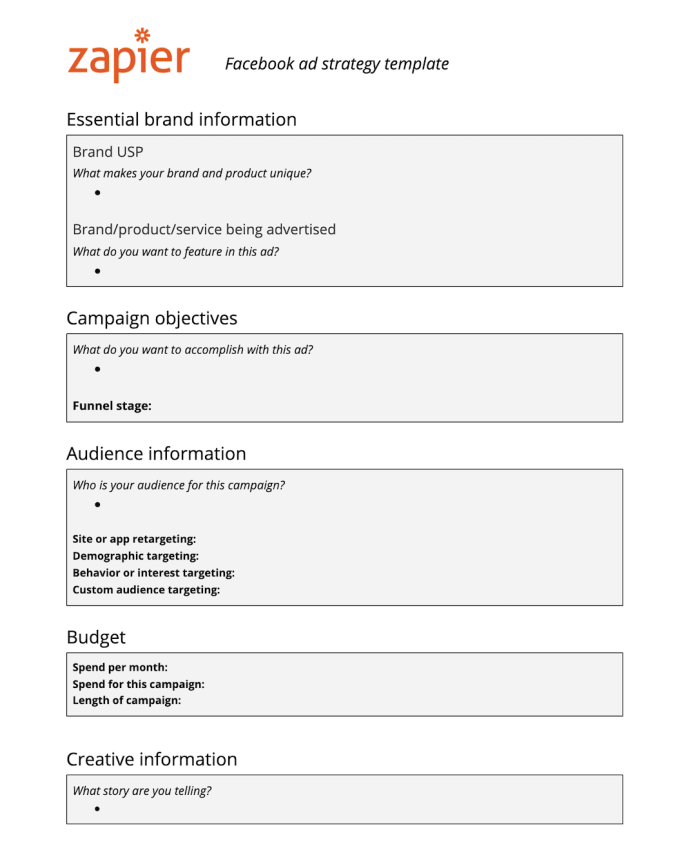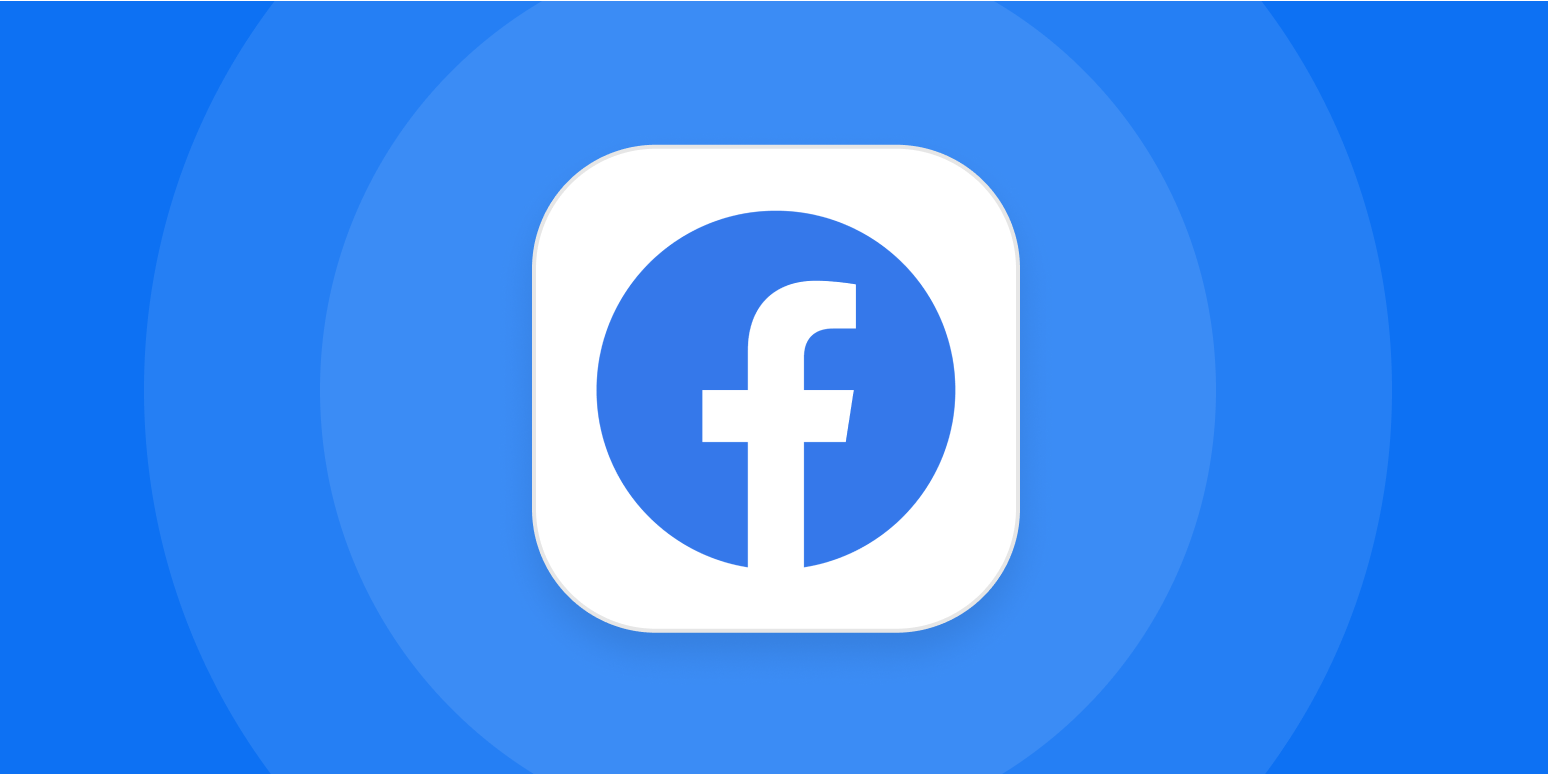Facebook ads is a complex system. There’s an endless number of options for customization, and if you’re dazzled by them, you might try to do too much at once, lose focus, and end up with underwhelming results.
You need to go in with a solid, clear strategy for each individual campaign you create. To help, I’m sharing a Facebook ad strategy template I’ve used with clients to help them maintain focus and get the best results.
Facebook ad strategy template
I originally created this template to collect information from my clients that would help me create PPC copy, but it’s evolved into a full-on strategy template. Agencies can use it to gather info from clients, or businesses can use it to help stay on track with their own strategies.
Make a copy of the Facebook ad strategy template for each new campaign, and feel free to adapt it to your needs. Agencies, for example, may request to see ads that the client has run that have worked in the past or ask what type of media the client is open to using or providing.

The template will help you home in on who you want to reach, what messaging you want to use, and how to best accomplish the specific goals you have in mind.
Here are some tips for filling out the template.
Essential brand information
-
Brand USP. Here’s where you should list your unique selling point: what makes your brand stand out from your competitors? You can also include any brand taglines or mission statements, which likely speak to this. This will stay the same for every campaign, so make sure you do a thorough job here since it’ll get copy/pasted quite a bit.
-
Brand/product/service being advertised. Here, you’ll indicate specifically what you’re advertising. Is it your entire business? A certain product or service? If there’s more than one, list each individually, and always include a link.
Campaign objectives
This is where you’ll talk about what you want to accomplish with this particular ad campaign. What are your goals? Be specific: instead of just “conversions,” say something like “event sign-ups” or “product X purchase.”
I’ve found that this is the section that can really provide the aha moment for brands. Maybe you’ll realize that you’re actually going for brand awareness, not conversions. Or maybe you’ll discover something super specific (maybe views of a certain video or filling out a certain form) that you could achieve with this campaign.
This is also a place to indicate which stage of the marketing funnel the viewers of this ad should be at—and, of course, this should align with your goal. You can’t expect to get cold leads from re-engagement campaigns, for example, and you want to be sure you’re measuring the right thing.
Audience information
Here’s where you can put all relevant information about your target audience, including demographics, pain points, and consumer behavior. If you already have buyer personas or audience segments, this is a great place to list them.
Remember, you’re talking about the audience for this campaign, not the audience for your business as a whole. It’s likely your audience for a Facebook ad will be narrower in scope.
Once you have that listed out, jot down how you plan on reaching this audience. There are all sorts of options for targeting on Facebook. I’ve included the following on the template:
-
Site or app retargeting (with the Facebook Conversions API or the pixel)
-
Demographic targeting (like age or gender)
-
Behavior or interest targeting (like “looking for a car” or “follows a vegan diet”)
-
Custom audience targeting (like targeting based on recent purchases or an email list)
You won’t need to have something for each of these options, but it’s good to review and see if it make sense to target in these ways.
Budget
Advertising is expensive, so you need to be realistic about your budget.
First, think about your monthly spend. You want to be sure you keep this in mind in case you’re running more than one campaign at a time. Then note how much you can spend on this campaign—it can be a specific dollar amount or a percentage of the total monthly spend. Finally, you’ll say how long you want the campaign to run for. This will give you a better idea of how much you have to stretch your budget.
Creative information
In this section, you can start to craft your story. Indicate the pain point that you’re resolving, and then begin to work that into a narrative. A lot of the creative work will be done by your copywriters and designers, but this will help you start off on the same page.
How to turn the template into a campaign
Once you have the template filled out, you’ll need to work with folks from across your marketing team (or outsource to a freelancer or agency) to turn this into a campaign.
-
Set up a campaign funnel, determining how many ads will be part of it.
-
Determine the format of your ads. (Video? Lead ad?)
-
Develop the content for your ads.
-
Figure out your best targeting options.
The template is just the first step, but it ensures that you have all the information in one spot, so everyone can stay more focused and aligned.
[adsanity_group align=’alignnone’ num_ads=1 num_columns=1 group_ids=’15192′]
Need Any Technology Assistance? Call Pursho @ 0731-6725516




